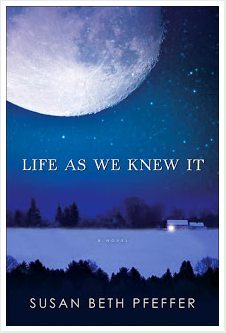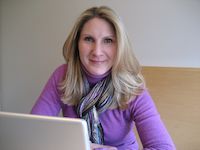A Home Schooling Curriculum For the End of The World (with reading list attached)
- Category: The Goods
- Published: Friday, 02 November 2012 11:13
 One of the goals of a superb education is to ensure that the next generation – our children -- are ready to compete in a global economy. Upon graduation, will they have what it takes to survive against powerhouses like the Japanese? The Germans? Those darned Sweeds? In the wake of recent meteorological events, I say we shift gears a bit and refine our American educational goals. Forget reading and writing and Singapore math. Let’s just hope that everybody survives.
One of the goals of a superb education is to ensure that the next generation – our children -- are ready to compete in a global economy. Upon graduation, will they have what it takes to survive against powerhouses like the Japanese? The Germans? Those darned Sweeds? In the wake of recent meteorological events, I say we shift gears a bit and refine our American educational goals. Forget reading and writing and Singapore math. Let’s just hope that everybody survives.
Fact: My ten-year-old son has missed about 20 days of school for weather-related causes. 12 and a half of those were from “superstorms” or rogue/freak/this-never-happens crazyass damage caused by wind or ice. (That half day was caused by the Halloween storm of 2011, when the elementary school opened for a costume pity-party parade in the school parking lot and then sent everyone home because it was too effing cold and dark to eat candy inside the building.) He and his sister have begun to think that missing a week of school every third year is the new normal, much as one might say that navy is the new black, or that New Coke was momentarily the new Coke. Right now it’s like my offspring are professors at a prestigious university, enjoying their god-given sabbatical.
I am starting to think that my children’s memories of school will be fond because they only attended once in a while and thus looked forward to it with heightened anticipation and glee, much like Laura Ingalls Wilder did during planting season on the prairie. “We really get to go to school, Ma and Pa? For a whole week? Say it ain’t so!””
“Don’t forget your chalkboard, Half-Pint!” I’ll say, as my daughter bounds out of the house, petticoats and braids flying.
You think I’m kidding? When the power goes, there won’t be a chalkboard app on her iPad for long. She’ll have to use an actual chalkboard. And then I’ll start calling dressing her oddly and calling her Half-Pint for fun.
What our children need in order to save them from the hazards caused by global warming is an educational foundation grounded in this very same earth that is now imploding all around us.
Our children need to learn how to wield an axe to cut down the trees that fall into their homes and then use those trees for kindling to heat their homes. Or, perhaps, to build new ones. They need to think and act like scouts without the sex abuse scandals, learning what the word ‘orienteering’ means and helping old ladies across 6-lane intersections without the guide of any working traffic lights. Refine the Phys Ed curriculum to include sandbagging and roof climbing, I say.
Also, globalization is critical, as the next generation will need to learn how to read the Mandarin instructions that come with a black market crank-handled radio or an imported Croatian generator. Our teenagers need to know how to style their hair without product or ionic hairdryers and how to talk directly to people by looking at them face-to-face - because there will no longer be texting to hide behind - and because we’ll all be living side-by-side on cots in shelters on high ground. They’ll need to learn how to walk to school uphill in the snow both ways all summer long. When I say back-to-basics, I really mean back-to-basics.
And so, I’d like to propose a curriculum for the end of the world. This step-by-step manual contains pre, during, and post-apocalyptic teaching guides intended to home school your child in the dark of your very own, semi-submerged house, using your state’s learning standards. It is applicable for grades K-12.
For those of you with gifted children, there are AP and Honors tracks available, at least until those tracks get washed away by the approaching tsunami.
To give you a little taste of what’s in store, attached is the Summer Reading Guide of Realistic Fiction (note: these used to be called “Apocalyptic Fiction” or “Dystopian Fantasy” but, in the wake of Sandy et al, the genre has recently been renamed.) Remember also, the term “summer” now extends from January to December.
These titles can be purchased on Amazon.com; summary content was taken directly from that website.
Life as We Knew It by Susan Beth Pfeffer
I guess I always felt even if the world came to an end, McDonald’s still would be open.
High school sophomore Miranda’s disbelief turns to fear in a split second when an asteroid knocks the moon closer to Earth, the way “one marble hits another.” The result is catastrophic. How can her family prepare for the future when worldwide tsunamis are wiping out the coasts, earthquakes are rocking the continents, and volcanic ash is blocking out the sun? As August turns dark and wintry in northeastern Pennsylvania, Miranda, her two brothers, and their mother retreat to the unexpected safe haven of their sunroom, where they subsist on stockpiled food and limited water in the warmth of a wood-burning stove.
This awesomely depressing trilogy will feel like another day at home with the kids.
The Age of Miracles by Karen Thompson Walker
In The Age of Miracles, the world is ending not with a bang so much as a long, drawn-out whimper. And it turns out the whimper can be a lot harder to cope with. The Earth's rotation slows, gradually stretching out days and nights and subtly affecting the planet's gravity. The looming apocalypse parallels the adolescent struggles of 10-year-old Julia, as her comfortable suburban life succumbs to a sort of domestic deterioration.
This blurb had me at “domestic deterioration” and “long, drawn-out whimper.” Feels like life with the spouse who cannot commute to his/her office because that office is no longer there! Fun for the whole family.
The Dog Stars by Peter Heller
A first novel set in Colorado after a superflu has culled most of humanity. A man named Hig lives in a former airport community—McMansions built along the edge of a runway—which he shares with his 1956 Cessna, his dog, and a slightly untrustworthy survivalist. He spends his days flying the perimeter, looking out for intruders and thinking about the things he’s lost—his deceased wife, the nearly extinct trout he loved to fish.
Doesn’t this description make you want to run/swim/paddleboard right past your McMansion and to your nearest CVS for your flu shot, while fishing along the way? (Don’t drive – it’s a waste of scarce gas.)
Trapped by Michael Northrop (To be release on Dec 12, 2012, if there is such a date)
It’s a setup just plausible enough to give you chills. A nor’easter, which will ultimately be known as the worst blizzard in U.S. history, sweeps into a rural New England community, trapping seven kids inside their high school for days. Northrop begins with some dark foreshadowing—“Not all of us made it”— which makes the students’ gradual realization of their predicament all the more frightening. First the snow piles up past the windows; then the water pipes freeze; then the roof starts making ominous noises. What begins as a sort of life-or-death The Breakfast Club (there’s the delinquent, the pretty girl, the athlete, and so on) quickly turns into a battle for survival.
A life-or-death Breakfast Club? Are you kidding me? Best way to die in a book ever. Can’t wait for it. Literally, I can’t wait.
In summary, I’m just working out the basics now, but hope to have the curriculum ready to go before next Wednesday, when a non-fictitious nor’easter threatens to psychologically damage every weatherman by making him question whether he can possibly be that unfortunately historically accurate twice in a row. Until then, stay safe, stay warm, and stay dry.
And read about the end of the world – it’s only fiction, after all. Columnist and blogger Julie Gerstenblatt writes with humor and candor about her life in Scarsdale, her friends and family, and the particular demands of motherhood and wifedom in modern-day suburbia. Read about her new book Lauren Takes Leave and keep up with the latest from Julie Gerstenblatt at http://juliegerstenblatt.com
Columnist and blogger Julie Gerstenblatt writes with humor and candor about her life in Scarsdale, her friends and family, and the particular demands of motherhood and wifedom in modern-day suburbia. Read about her new book Lauren Takes Leave and keep up with the latest from Julie Gerstenblatt at http://juliegerstenblatt.com













